
At the beginning of the eighteenth century, the colonial wars in the New World came to an end. The Spanish, French, English, and Dutch, who had fought each other over new colonies, made peace. The golden age of privateers was over – their licenses to plunder were revoked. And pirates…? Pursued and forced to flee, they sought other places for their bloody trade.
Beyond the Cape of Good Hope lies the vast Indian Ocean. Since ancient times, ships of Arab sultans and Indian rajas have sailed its waters. The gateway to the Indian Ocean was guarded by the island of Madagascar, whose secluded bays could hide an entire fleet. For this reason, the island was favored by pirates, who used it as a base for their raids. In Madagascar, the brigands founded their republic without kings or dictators. This first republic of free men on earth immediately became hated by all monarchies, and the kings set out to destroy it.
From 1498, when the navigator Vasco da Gama discovered the sea route to India, the waters of the Indian Ocean were ruled by the Portuguese. Eighty years later, Sir Francis Drake, who circumnavigated the globe, opened the ocean to the warlike English, and the Portuguese were driven out. Then came the buccaneers and pirates of the New World. Among them was one whom spies reported to their kings that he had instigated an epidemic of piracy in the Indian Ocean…
======== ======== ========
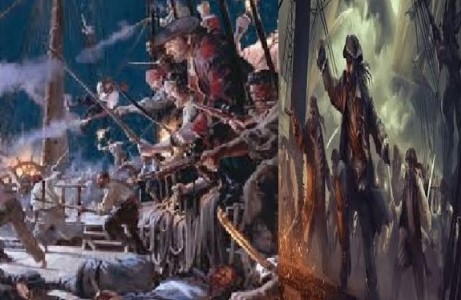
Thomas Tew came from a wealthy family in Rhode Island. He is known to have been married and had two daughters. He served in the navy and 1691 became captain of the sloop ‘Amity Venture’, of which he was co-owner. The Governor of Bermuda granted Tew a privateer’s license with the right to attack French ships and plunder colonies on the African coast. Along with the license, he was also given the task of attacking the French factories in Gambia. After studying the details of the assignment, clever Tew realized that he was being sent on too risky an adventure in which he could easily lose his head, and the money offered was too small for such a risk. So Tew decided to ignore the greedy bosses’ assignment and suggested to his crew to set sail for the Indian Ocean, to which they happily agreed. They rounded Africa, and Tew steered the ship into the Strait of Bab el Mandeb. In the fog of this devilish place, ships with all the people on board disappeared without a trace. Therefore, the strait was notorious, seamen nicknamed it the “Gate of Tears”.
In June 1693, at the entrance to the strait, the pirates encountered an Indian warship with more than three hundred warriors on board, not counting the crew. They outnumbered the pirates three to one. But Tew decided to attack. His cutthroats shouted and cheered: “…gold or a wooden leg, we are with you, captain..!”.
The pirates captured the ship in a boarding battle. It was filled with gold, silver, gems, and jewelry belonging to the Mughal Emperor himself. The Mughal Empire was founded in the early 16th century by Padishah Babur, a descendant of Emir Timur. The empire was vast, covering the territories of modern India, Pakistan, Afghanistan, and Bangladesh.
Each pirate received a share of three thousand pounds sterling. With that kind of money, he could buy an estate and live in idleness for the rest of his life. Many decided to give up piracy and settle in Madagascar. Thomas Tew decided to stay as well.
One day a ship came into the bay. It was the schooner of the French pirate Massillon, one of the founders of the Pirate Republic. Thomas Tew was invited to lunch, during which the Frenchman told him about the Republic, and after the meal he offered to take a walk and see for himself. Tew was amazed at what he saw, especially how well the harbor was fortified and protected.
From there, pirates sailed to the African coast, attacking slave ships and taking captives back to their island to live as free men. Tew also took part in pirate raids and captured several ships, including an English vessel carrying 240 slaves. As well as raiding, the pirates were busy charting and mapping the island’s coastline, studying the local currents, tides, shoals, and secluded coves where they could hide their fleet.
Several months passed in this way. One day, the pirate ship was pursued by five Portuguese warships. She entered the harbor through a well-known channel, and the crowds on the shore awaited the spectacle of the uninvited guests running aground. But the Portuguese, closely following after the pirates’ ship, passed safely through all the underwater dangers. This did not make the pirates laugh and they rushed to their cannons. Their cannonballs sank two of the uninvited guests’ ships, forcing the others to leave the harbor. In that skirmish, Thomas Tew showed his skill as a commander. He was assigned a ship, and Tew sailed the ocean in search of booty. One day, off one of the islands, he came across a pirate ship, in whose crew he recognized a familiar quartermaster.
- “Hey captain, come aboard, we have a roasted pig and a barrel of wine! ” the quartermaster waved with a smile.
In that part of the ocean, where the winds of the cold Antarctic waters meet the heat of the African deserts, the weather is unpredictable and can change in a matter of minutes. While they were recklessly feasting, a gale struck. It tore their ships from their anchors and hurled them onto the rocks of the island. All dead, Thomas Tew was the only survivor. On the deserted island, he survived by eating what he could find among the wreckage, and only a miracle could save him.
Captain Massillon, alarmed by Tew’s absence, began a search and after a few weeks found his mate. The Frenchman had bad news. After Tew’s ship left port, another ship left as well. The remaining pirates were attacked by natives who killed almost all the men, women, and children. Only forty men were left alive. It was rumored that the Portuguese had turned the natives against the colony by giving them weapons.
Shortly afterward, during another violent storm, the Massillon’s ship disappeared. The entire crew perished along with their brave captain. Depressed, Thomas Tew returned to America. At his home on Long Island, surrounded by his family, he gradually came to his senses. Tew had not been convicted of piracy and remained a legitimate privateer to the authorities. He recounted his adventures to New York Governor Benjamin Fletcher, who was so enthusiastic about the fabulous riches of the Mughal Empire that he expressed a desire to become one of the investors in the future expedition.

Having secured the governor’s financial backing, Tew set sail again for the Indian Ocean. In June 1695, he reached the Bab El Mandeb Strait. There he met the English pirate Henry Avery, and, teaming up, they soon tracked down a merchant caravan of two dozen laden ships. Avery pursued and captured two of them. He was successful and his booty totaled about £240,000 in gold and silver. Captain Tew could only catch up with one ship and it was the Indian naval frigate Fateh Mohammed. A volley of shrapnel from its guns struck Tew in the stomach. He died at sea, far from his native Newport, where he had dreamed of living out his days in peace. His sailors were captured by the Indians.
Henry Avery vowed to avenge his mate’s life.
***
2. . LONG-LEGS BEN.
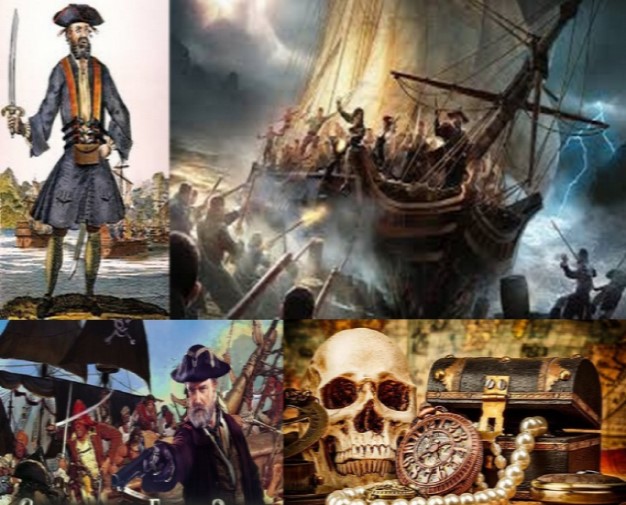
Henry Avery was born in the seaside town of Plymouth. The son of a merchant ship captain, he was a sailor from an early age, gaining experience on privateers and warships. But he was most attracted to the merry life on ships carrying slaves to the New World. Perhaps that’s where he got his nickname.
In 1694, he served as chief mate on the 46-gun frigate ‘Charles’. Spain was at war with France, and in this war, the British were allied with the Spanish. The ship was British but had a Spanish license to catch French pirates. The Spanish paid them under a complicated system, so payments were often delayed.
By September the frigate was anchored in the harbor of La Coruña, a port in northwest Spain, and crew was waiting for money. All were fed up with the lack of money and were annoyed by captain Gibson, who went ashore every morning to drink a few glasses of his favorite punch in a tavern, whence he returned in a cheerful drunken stupor. ‘Long-Legs Ben’ saw in the crew’s ripening discontent an opportunity for himself, and it would be sinful to miss it. He proposed a far more profitable adventure to the sailors, and there was no objection to his plan.
That morning the captain did not come out of his cabin for a long time, his head must have been buzzing after yesterday’s drinking. Alarmed by the rocking of the ship and the noise on deck, he rang the bell. Long-Legs Ben came into the cabin, and Gibson stared at him with clouded eyes:
“What’s the matter, mate? What’s going on down there?”
“Nothing’s wrong,” the mate replied calmly.
“What’s wrong with the frigate, damn it, are we on the move? Or is it the wind up there?” said the captain nervously.
“Yes, everything is fine, we are at sea and the weather is fine, a nice breeze is blowing,” the mate smiled at him.
“At sea? What on earth? How can it be?” cried Gibson, losing his temper.
“Don’t be nervous. While you’re getting dressed, I’ll let you in on a secret,” Avery continued, smiling, “you should know that from now on I am the captain of this ship, and these are my quarters, which you must leave immediately. My mind is made up, and all the brave sailors of this ship agree with me.”
Captain Gibson froze with his mouth open, apparently in shock. Long-Legs Ben continued:
“If you object and get nervous, we’ll calm you down. But if you calm down, maybe I’ll make you my lieutenant one day.”
“There’s another possibility,” Long-Legs Ben said with a grin, “there’s a dinghy waiting, and you can go ashore to the tavern right now and have your punch. And if you tell your story there, you’ll probably get a free drink.”
Gibson finally woke from his shock. He grabbed his clothes and jumped out on deck in his underpants, causing the whole crew to laugh. The bosun obligingly led him to the rope ladder and a few others who did not want to join in the adventure jumped into the dinghy with him. The bosun untied the dinghy and that was the end of the bloodless mutiny.
***
Long-Legs Ben was unanimously elected captain. He was 40 years old, a mature man, and an experienced sailor. Why did a shipowner, a respected citizen with a secure future, become a pirate? Some contemporaries believed the reason was his wife’s adultery. Sailors’ wives themselves usually say they do not push their husbands into reckless behavior. For Henry Avery, a wife played no other role than her natural one. Besides, in every port in the world where his ship called, hundreds of women were available, who agreed to enjoy free booze. Avery was far from going crazy over a runaway skirt. He soon proved it with his common sense and coolness.
They named their frigate ‘Fancy’ and hoisted a pirate flag on the mast. The new captain was clever, cunning, and shrewd. At the first opportunity, he sent a letter to the English newspapers declaring his loyalty to the king and the people of England.
However, within the first few days of his pledge of allegiance, he captured and robbed several English and Dutch merchant ships off the Cape Verde Islands. Many sailors from the captured ships joined the pirates. ‘Long-Legs Ben’ was a man who knew the aspirations and desires of the common sailor, and his arguments were hard to argue with.
***

Their course was around Africa, into the Indian Ocean. After rounding the Cape of Good Hope, they resupplied their water and provisions in the Comoros. In the waters of these islands, they found many pirate ships flying different flags. There Long-Legs Ben captured one French ship and then two more. He sailed on to the Straits of Bab El Mandeb with this fleet. They met Thomas Tew’s ship on the way, and the two agreed to act together, their minds aligned.
Many Indian and Arab merchant ships sailed the Bab El Mandeb. The pirates circled the area for weeks in search of rich plunder. Finally, they spotted a caravan of two dozen ships and attacked. Avery was successful; he captured two traders and robbed them. But Thomas Tew was not so lucky. He got into a fight with the Indian warship Fateh Mohammad and was killed, and the Indians captured his crew.
After the battle, the Indian ship crawled slowly, its crew busy repairing and replacing damaged spars and sails. In the gathering darkness, Long-Legs Ben’s ship stalked the Indian. Waiting for a moment when a change of tack many of the pursued ship’s crew were working the sails, the pirates rushed aboard. They rained down on the deck, cutting everyone to pieces with their sabers. Dazed by the sight of the pirates, the captain surrendered without a fight. Long-Legs Ben freed the captured sailors and they hacked the Indians to pieces. It was revenge for the death of Thomas Tew. The booty was fifty thousand English pounds ($10 million at today’s exchange rate). But the main prize lurked in the night.
From the captured Hindu captain, Long-Legs Ben learned that he was escorting the largest ship in the Mogul Empire, the ‘Ganges-e-Sawaii’, which belonged to the emperor himself. The ship was returning to India with many pilgrims from Mecca, including the highest officials, their wives, and girls. The ‘Ganges-e-Sawaii’ was loaded with treasure, armed with 62 cannons, and had over 500 soldiers on board.
The pirates had 46 cannons and only 150 sabers. But they had courage, and that’s worth a whole fleet! The pirates decided to attack.

In the darkness of night, they overtook the ‘Ganges-e-Savaii’, and the cannonballs of the first salvo penetrated the mainmast, which collapsed, causing panic on the Indian ship. The saber butchery and skirmishing continued for two hours, and then the looting and orgies began. The pirates stripped the women of their jewelry and raped them. Some captives threw themselves overboard or killed themselves with daggers to escape dishonor.
Having finished their bloody business, the pirates sailed to the island of Reunion, east of Madagascar. There they divided their booty. The treasure was worth £350,000 ($80 million today). Each man’s share was beyond his wildest dreams: £1,000, equivalent to a sailor’s salary for 80 years’ service. Each also received a handful of jewelry. This wealth was enough to live in idle luxury for the rest of their lives.
Long-Legs Ben realized that his bloody robbery had dragged him into politics and that an international scandal was inevitable. He also realized that he had provoked a religious conflict for which all the monarchs on all seas would be after him. Knowing that sooner or later he would be caught, Henry Avery decided to disappear forever.
In India, the news of the pirates’ attack on the ships of the Great Mogul caused a storm of protest. When the ‘Ganges-e-Sawaii’ arrived in Surat and survivors told of the pirates’ atrocities – torture, murder of pilgrims, rape of women – an angry mob of Muslims laid siege to the English mission. Only the intervention of troops saved the English from physical reprisals. But the ‘English East India Company’ employees, all 65 of them, were put in chains and thrown into prison.
Long-Legs Ben escaped from the Indian Ocean to the Atlantic and on to the West Indies.
In April 1696, his frigate ‘Fancy’, with 113 sailors, found itself in the pirate harbor of Nassau in the Bahamas, in need of provisions. But the governor already knew of Avery’s “deed” and extorted huge sums of money from him for help. Each sailor was charged a fee for each day their ship stayed in the harbor. Finally, the greedy governor demanded the ship, and they gave it to him for nothing, with a load of goods in the hold. And the pirates of Long-Legs Ben began to scatter.
Avery himself changed his name, bought the schooner ‘Mayflower’, and set sail for Boston with two dozen accomplices. The rest were scattered throughout New England, North Carolina, and Pennsylvania. In Boston, Avery came under suspicion by the authorities and had to flee to Ireland. But there he was already wanted, and the King of England himself had promised a reward of £500 for his head – a huge sum of money in those days. By comparison, a manor house with horses could be bought for £200. The owners of the ‘East India Company’ promised the same amount for the capture of the pirate. The Mogul Emperor added the same amount. Some of Avery’s associates were captured and hanged in England. Avery himself disappeared without a trace.
***
EPILOGUE.
In three years of dashing life, Thomas Tew has amassed a fortune of $111 million (at current exchange rates), making him the third richest pirate in the history of American piracy. There is a family history associated with his fortune.
In 1945, writer Edward Snow, author of Pirates of the Atlantic Coast, was contacted by a relative of Thomas Tew. She asked him to help her find the captain’s chest in which he kept his treasure. Supposedly, this chest had been seen by another relative who lived on Cape Cod in 1920. The empty chest was sold by Tew’s grandson to a collector as a family heirloom. The author undertook a search and was successful in locating the chest, which he purchased for a considerable sum. But the woman who had asked for the chest had died, and her heirs were not interested in the old box in which their ancestor had once stored his treasure.
The writer found himself in possession of an unclaimed antique. Cheerful Newport residents have opened a museum in memory of pirate Thomas Tew. One of the Caribbean rums is named after the pirate. It’s a fact the town is very proud of.

***
And Long-Legs Ben made the biggest score in the history of piracy.
And he was the only pirate to get away in time.
* As one of the captured pirates testified in court, Henry Avery changed his name to John Bridgeman and moved from Ireland to Scotland.
** His stolen riches made Henry Avery a figure of folklore, and he became the prototype for the heroes of adventure novels. The author of ‘Robinson Crusoe’, Daniel Defoe, included him in his stories and changed the hero’s name to John Avery.
*** According to another legend, Long-Legs Ben returned to Madagascar, where he lived with his captive, a beautiful daughter of the emperor of the Great Mogul. She bore the pirate several children.
**** It is also said that when he tried to sell the jewels he had stolen, he was cheated by crooked bankers and died in poverty.
One thing is undeniable: when an event becomes part of folklore, it becomes fiction and a fairy tale to the ears of the average person.
I’m inclined to believe that the clever pirate wasn’t captured by kings or bankers. And his lucky descendants are on their islands somewhere in the Caribbean. And no crisis can befall them!
Fifteen men on a dead man’s chest,
Yo-ho-ho and a bottle of rum!
Drink and the devil will bring you to your end,
Yo-ho-ho and a bottle of rum!
© Copyright: Walter Maria, 2018
Publication certificate #218072801865
*****
3. THE PRISONER OF HIS PASSIONS.
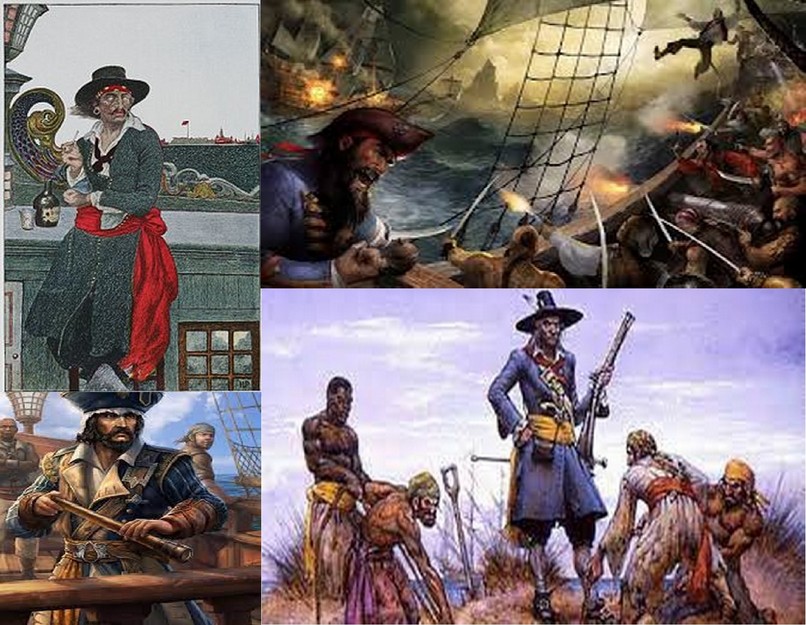
Born in 1645 in a seaside town in Scotland, he dreamed of becoming a sailor like all the other boys in the neighborhood. It was an era of bloodthirsty pirates and their hunters, the privateers. William Kidd chose to hunt pirates. Most of the pirates were in the New World, so when the time came, Kidd headed across the ocean. By the time he was in his fifties, he had reached the pinnacle of his profession, built an impeccable reputation, and become a captain. Dreams came true and life unfolded, William Kidd married a young and wealthy widow. And then he received a tempting offer from London.
In London, he was introduced to the Governor of New York and Massachusetts, a member of the British Parliament, Lord Bellomont. The latter had strong connections in the world of politics and business on both sides of the ocean. Having heard of the privateer’s exploits when he was governor of Barbados, the lord offered Kidd the chance to lead an expedition to eradicate piracy in the Indian Ocean and Red Sea. There, the pirates Henry Avery and Thomas Tew had done enormous damage to the British Empire’s friendship with the Great Mogul Empire and the countries of the Arab East. The Royal Household needed a professional pirate hunter to rectify the situation.
Captain Kidd was promised a license giving him the right to capture French ships. He was given a three-masted warship with 30 guns and a hundred experienced sailors under his command. In addition to Lord Bellomont, the expedition was supported by members of Parliament, Lords Somers, Orford, Romney, and Shrewsbury. The expedition was funded by the financier Edmund Harrison. No privateer had ever been honored with such an offer.
But just as the foam of the sea hides treacherous reefs, so the promises of politicians conceal dangers. By granting the pirate hunter enormous powers, the lords promised Kidd full protection and patronage if he seized the opportunity to plunder a rich ship. In effect, he was being offered the chance to become an undercover pirate. Behind the greedy politicians’ scheme lay the usual greed for profit. Their terms were robbery, with the bulk of the profits from the privateer’s legal and illegal activities to be allocated to them. Kidd himself was left with a crumb, his sailors even less. Kidd was just a seaman, far from understanding the backroom games of cunning politicians. Diplomacy is an art, the ability to disguise complex intentions in simple words. Most long-serving politicians have their interpretation of honor or none at all.
Kidd was at the age when all a man’s accumulated knowledge and experience was directed towards achieving the desired heights in his career. Such a man is always vain and ambitious and suffers when others underestimate him. Kidd may have realized the risks of the venture. But the politicians made him a tempting offer with full support and protection guaranteed. And he may have seen it as a chance offered by fate. Ambition drove him into the venture and he plunged headlong.
*****
When the Adventurer’s Galley was preparing to leave Plymouth in May 1696, the crew was informed of the terms of the contract. As a result, many sailors went ashore because of the low pay for the dangerous work ahead. They were paid more in the Royal Navy. Kidd decided to go to New York, where he hoped to recruit a crew of reliable men he had worked with for many years. In New York, he managed to recruit a crew and now had 160 sailors with him. After purchasing wine in Madeira, they set sail for the Cape of Good Hope. Nine months after setting sail, their ship rounded Africa and entered the Indian Ocean. There was a lull in Madagascar, but the neighboring Comoros Islands were swarming with pirates, so Kidd went there. They pursued the pirates, but they escaped and hid in known hiding places. The result was meager, and the money spent on ship repairs and provisions melted away. Kidd lost nearly a third of his crew to the African plague. And some simply fled to more fortunate pirates.
Kidd replenished his crew in Madagascar, but the sailors he hired also turned out to be pirates. Soon they began to “muddy the waters” and incite the crew to piracy. Kidd was caught in a mousetrap, he was surrounded by evil individuals, and a riot was brewing on the ship. During one of the verbal altercations, in a fit of rage, he used a heavy wrought iron bucket to blow the head off one of the mutineers, a gunner. The mutiny was quelled, but not for long.
It had been two years since they had left Plymouth. Letters came in the post, threatening to replace him, demanding results, demanding gold. And one day, pressed on both sides, he made up his mind. The fateful night passed in thought, and in the morning Kidd woke a pirate. He announced to the crew: “…we have been unsuccessful so far, but courage, my lads, we will make our fortune out of this…!”.
The crew welcomed his decision and they sailed to Bab El Mandeb. There they learned that a gathering flotilla of merchant ships under English, Dutch, and other flags was preparing to sail through the strait. On the fourth day, towards evening, the man shouted from the mast that he saw three ships on the horizon. They turned out to be a merchant ship and two accompanying warships. It was here that Kidd made a rash mistake that cost him his reputation. As he approached the merchant ship, Kidd fired his cannons and offered to surrender. But the escort ships began to pursue him. Kidd managed to escape during the following night and fled to the coast of India. His ship, however, was recognized in the skirmish, and news of the pirate privateer soon reached the ears of officials.
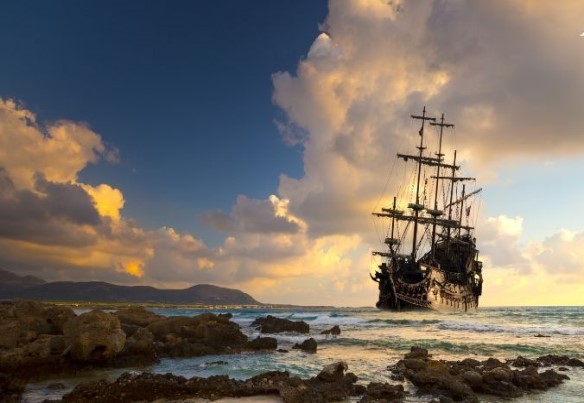
It was January 1698. Kidd was circling the coast of Malabar, heading south. Just off the southernmost Cape Cormorant, he was lucky enough to capture a rich ship, the ‘Qaeda Merchant’. The captain was an Englishman and the ship belonged to the ‘English East India Company’. The same company whose employees were almost torn to pieces by an angry mob of Muslims after the rampage of the pirate Henry Avery. The captain of the captured ship accused Kidd of piracy, but he made no secret of his intentions and cleaned the trophy. The loot was sold on the coast and Kidd sailed for Madagascar, taking the captured ship with him. After dividing the £15,000 (three million dollars today) booty, the pirates and almost all the sailors deserted Kidd. He sank the rotten ‘Adventure Galley’ and sailed to America on the captured ship, which he renamed the ‘Adventure Prize’.
Little did Kidd know that by capturing the English East India Company ship, he had signed his death warrant. Not only had he broken the terms of his contract, he had done the exact opposite. His patron Bellomont and other lords disowned the dangerous idiot, risking the loss of their position in society.
Kidd’s further actions were those of a fool. He had not had the sense to disappear like Henry Avery, even though he had enough gold to lay low and live in prosperity, waiting for better times. Kidd had naively hoped that Lord Bellomont would get him out.
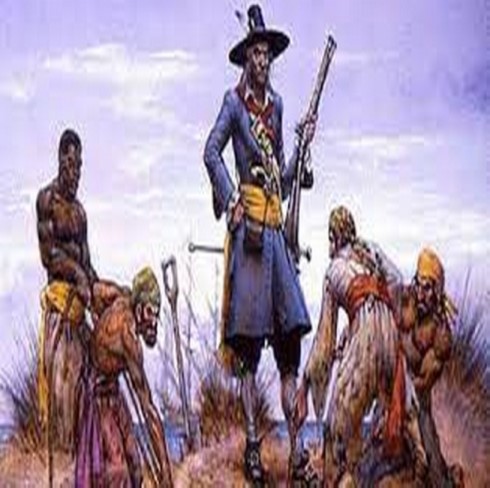
Nor did he have the courage to continue as a pirate. He hid the loot, buried some of his treasure on a small island off Long Island, and appeared before Lord Bellomont in Boston. Bellomont ordered Kidd’s arrest and kept him in jail until the pirate told Bellomont where he had buried the chests. Kidd was then sent in chains to London for trial.
He was questioned in Parliament, but the records of his interrogation had strangely disappeared. It could not have been otherwise, for they contained dirt on his associates. The Lords, who had once promised to support him, now wanted Kidd hanged as soon as possible before he could say more. In May 1701, after a lengthy trial, privateer and pirate William Kidd was found guilty of piracy and the murder of his cannon master. He had no luck on the gallows either – the first rope broke under the weight of his body and he was hanged a second time. Kidd’s body was placed in an iron cage on the River Thames as a warning to anyone who might wish to repeat the pirate’s fate. The body remained in the cage for 20 years, until the seawater bleached the skeletal bones.
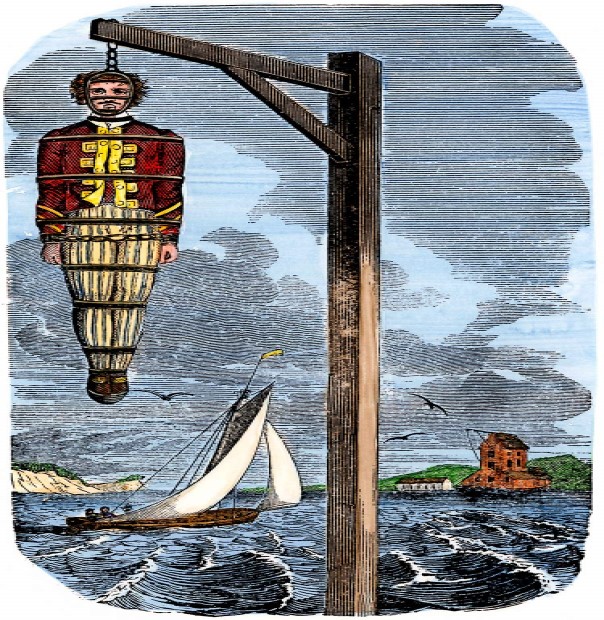
***
Treasure hunters recently found a 50kg bar of silver in the waters of Santa Maria Island, off the northeastern tip of Madagascar. It was there that Kidd shared the looted treasure with his associates and where he sank his frigate, ‘Adventure Galley’. The ingot caused a furor among the public and was displayed at a special ceremony where officials announced that it was a silver bar from a hoard belonging to the famous 17th-century Scottish pirate William Kidd.
American treasure hunter Barry Clifford, who found the ingot, said the following about the find: “It hit me over the head and I thought: what the hell has happened to me? I didn’t expect this, but there’s more to it than that. I was at the bottom of the pit where I found the silver ingot, and that pit was filled with metal. It’s too dark to see what kind of metal it is, but my metal detector is crackling and telling me there’s metal all around…”.
The treasure of Captain Kidd is the stuff of legend. People have been searching for it for three hundred years. Experts believe that the silver ingot, marked with the letters S and T, was cast in Bolivia in the 17th century. They believe that the ship that was found was built in England. However, more evidence is needed to prove that the ingot is linked to Captain Kidd. The location of the ship, believed to have sunk in 1698, has been known for many years, but the silver ingot has only recently been discovered. Barry Clifford confirmed that his metal detector signaled while diving at the wreck site, but it was too cloudy to see anything. British Ambassador to Madagascar Timothy Smart, who attended the ceremony, said he hoped Mr. Clifford’s latest discovery would boost Madagascar’s tourist image. The ingot was displayed in a local museum.
All legends become myths. One such legend is that Captain Kidd hid most of his booty elsewhere, creating a boom in treasure hunting around the world. This legend inspired Robert Stevenson to write his immortal book Treasure Island. But even Stevenson could not understand why a privateer and honest captain would become a pirate. The myths continue to grow.
In my reflections which led me to write this story, I have tried to find an explanation of the motives that turn an ordinary man into a criminal. However, these motives have long been studied and interpreted by psychologists. I have merely put them into the form of a story.
© Copyright: Walter Maria, 2018
Certificate of Publication No.218072801865
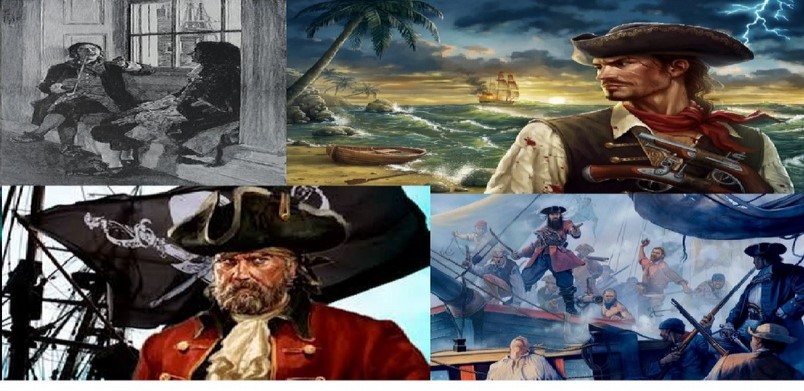
Very interesting information! Perfect just what I was looking for!
Your point of view caught my eye and was very interesting. Thanks.